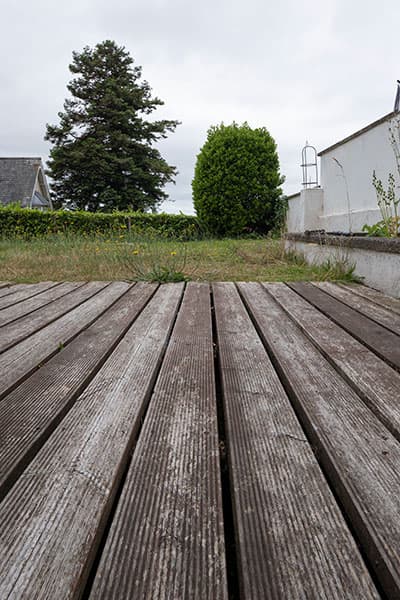
Upward shift has given perfectly corrected verticals in this image of Millennium Park, Chicago. Canon EOS 5D Mark IV, TS-E 17mm f/4L, 1/15sec at f/11, ISO 100. Credit: David Clapp
If there is one lens to purchase that announces your accomplishment as master of technical photography, it’s the tilt-and-shift lens. Many photographers beginning their journey into photography behold these incredible optics with both a sense of fear and wonder. It is mathematical indeed – movements, scales and all those extra knobs. Compelling and daunting, these lenses have exemplary build quality and all have to be manufactured with military precision. Some, like the 17mm Canon (nicknamed ‘the crystal ball’ with its orb-like front element) are so beautiful and so captivating to gaze upon, that it is easy to fall hopelessly under its spell. Yet, more often than not, the romance can be fleeting, confusing and only lead to heartache.
Think of a tilt-and-shift like a pocket-sized large format camera. It is here where its origins lie. Way back when cameras were carried on donkeys and made of wood and steel, every lens was a tilt-and-shift lens. With the benefits of a huge image circle significantly larger than the 5x4in capture area, the lens could be shifted up, down, and even left and right to ‘correct’ the picture.
The lens could also be tilted (up and down) or swung (left and right) to angle the focal plane along the subject. When you consider that a 90mm lens is a ‘wideangle’ on a large format camera, these tilt movements are essential to assist the drawbacks of a reduced depth of field, by angling the focal plane along the subject. It’s known as the Scheimpflug principle. However, now is not a time to ‘wing it without the manual’, but by conquering its complexities you open a doorway of possibilities.

Aurora Borealis over Castle Rigg in the Lake District, Cumbria. Canon EOS 5D Mark IV, TS-E 24mm, 25sec at f/8, ISO 3200. Credit: David Clapp
Available optics
The market leader is Canon with a total of five exceptional optics: 17mm f/4, 24mm f/3.5, 50mm f/2.8, 90mm f/2.8 and 135mm f/4. They are expensive, with prices ranging from £1,800 to £2,200 at the time of writing, but they have myriad uses. The wideangles (17mm and 24mm) are primarily architecture, interior and landscape lenses, with the overlapping 50mm opening the doorway to macro photography. The focal plane can be angled along the subject at wide apertures to get all those dreamy flower heads in focus. The 90mm and 135mm lenses take this concept into product photography such as jewellery and medical photography and dentistry.
All tilt–shift newbies find shifting a straightforward concept. Set the camera level and shift the lens upwards to correct what would be converging verticals. You can place the camera in landscape or portrait mode and shift the composition to avoid leaning tower blocks. It’s unbelievably addictive.
Now when it comes to tilt, here’s where everything goes wobbly. With just 7° to play with, it initially seems a little pathetic, until you realise that at 7° the focal plane is lying along the fl oor. That’s right, the focal plane has literally rotated 90°, but the mind bending doesn’t stop there. The depth of field has now become wedge shaped and your focusing ring raises and lowers the focal plane – it’s literally levitating! Read all about the Scheimpflug principle and take your time. Tilt is a tricky beast to conquer.
It’s a small world
You can also intentionally tilt the lens to create miniaturising effects. Pick a high viewpoint and tilt the lens upwards to throw the focal plane out and shrink the world around you. The effect mimics a macro lens, but with real-world subjects like cars and people, the concept can be hilarious.
Is this a beginner lens? Absolutely not, but with some perseverance (and reading) the results can be incredible. From a perfectly aligned world, to impossible depth-of-field effects, the tilt-and-shift lens could be calling you to a world of technically corrected fun.

Canon EOS-1Ds Mark III, 90mm, 1/200sec at f/5.6, ISO 200. Credit: David Clapp
Why it works
Taken from a cliff top in Santorini, Greece, the miniaturising can be seen in full effect. It’s all about the viewpoint. It’s absolutely essential to be as close to 45° to the subject as possible, because this is the angle from which we examine the world close up. Tilting the lens upwards makes the picture lose focus at the top and bottom, simulating the close-focus effect of a macro lens. When working with people, interaction is absolutely key to add a narrative to the photograph. The lens used here was a 90mm tilted by 5°, the aperture at f/5.6.
David Clapp’s top tips
Align the camera’s shift

Credit: David Clapp
1. In this unshifted but positioned example, the verticals are converging. This is a common problem seen when shooting architecture without a tilt-and-shift lens. The distortion, although subtle, causes the building to taper inwards at the top, which is not what your eyes experience.

Credit: David Clapp
2. Set up the camera using the inbuilt level, with the pitch and yaw zeroed. As can be seen in this picture, the verticals are perfectly straight, but the top of the building has now been cut off. This is a good situation to use the power of the shift to reposition the image circle. It will help us capture the entire building into the picture.

Credit: David Clapp
3. The lens has now been shifted upwards by 5mm. This is enough to position a comfortable gap at the top of the image, and so the shift composition looks roughly the same as the composition in Tip 1, but with the verticals now corrected. There are no more converging verticals in this picture.
Aligning tilt

Credit: David Clapp
1. This composition not only highlights the possibilities, but also the compositional issues with tilt. The camera is set to f/3.5, no tilt, with a downward shift – the trees are in sharp focus, but the decking is extremely out of focus.

Credit: David Clapp
2. By applying some tilt and refocusing in live view (10x), the focal plane is now lying down along the ground, at f/3.5! Sharp focus front to back, but the issue is now with the trees that intersect the almost horizontal focal plane. We need to increase the aperture or this will never work.

Credit: David Clapp
3. Now at f/8, the whole image is in focus, just 10 inches from the front of the lens – a task that would be impossible with any 24mm optic. To achieve this it took just 4° of tilt and some careful focusing, by examining the foreground and the treetops in live view. Practise and experiment with tilt to improve your images.
Hire a tilt–and-shift lens
It goes without saying that specialist optics do not come cheap, and for such niche requirements not many people can justify splashing out on a tilt-and-shift lens. However, there are a number of places where you can hire a tilt-and-shift lens, just like any other camera gear, for as little as £25-£30 a day.
Kit list
- Spirit bubbles everywhere When shifting the camera, perfect alignment is essential – you can’t have too many spirit levels! Cameras have highly accurate inbuilt electronic levels, but some prosumer cameras don’t have the all-important rise and fall.
- Levelling base If you really get the bug, a levelling base is the key to a fast-track set-up. Unlock one handle and rotate your entire tripod head in one movement, without the headache of aligning the tripod legs. It’s essential kit for interior photographers in particular.








